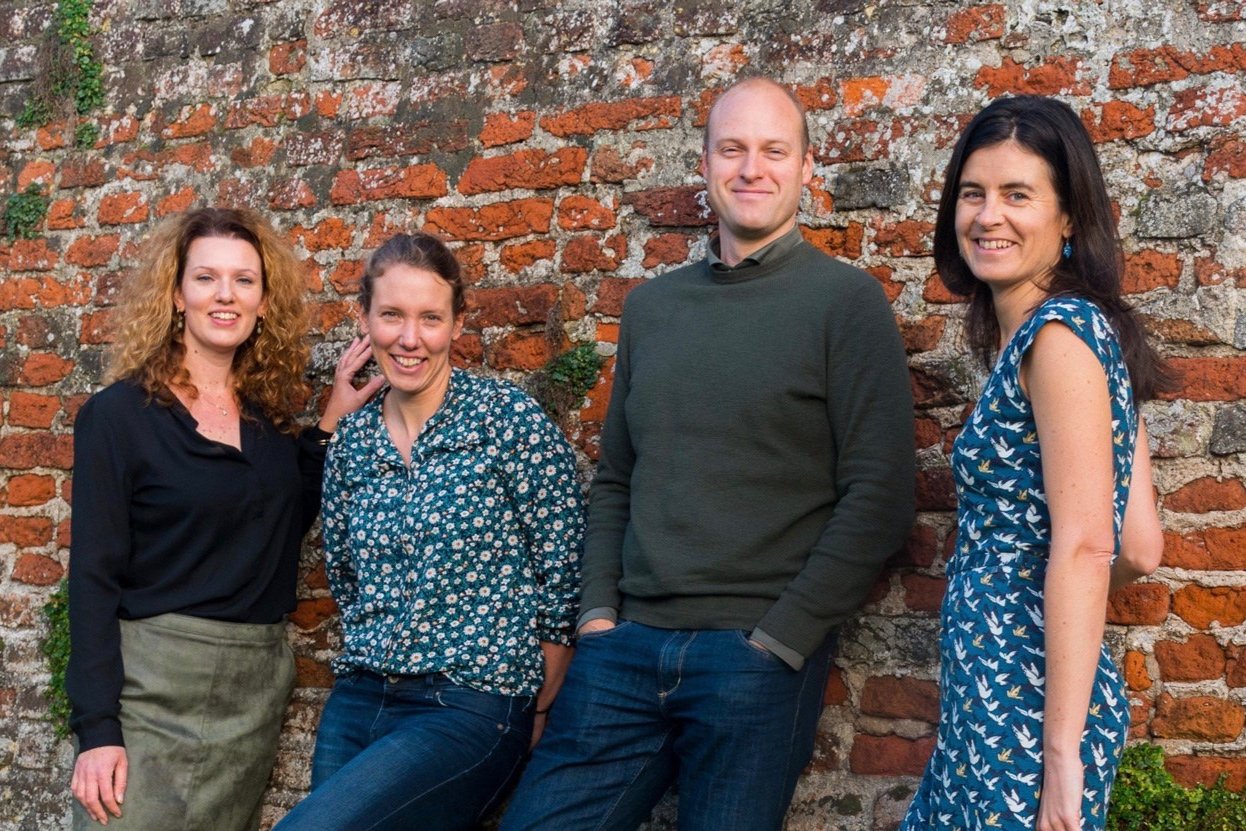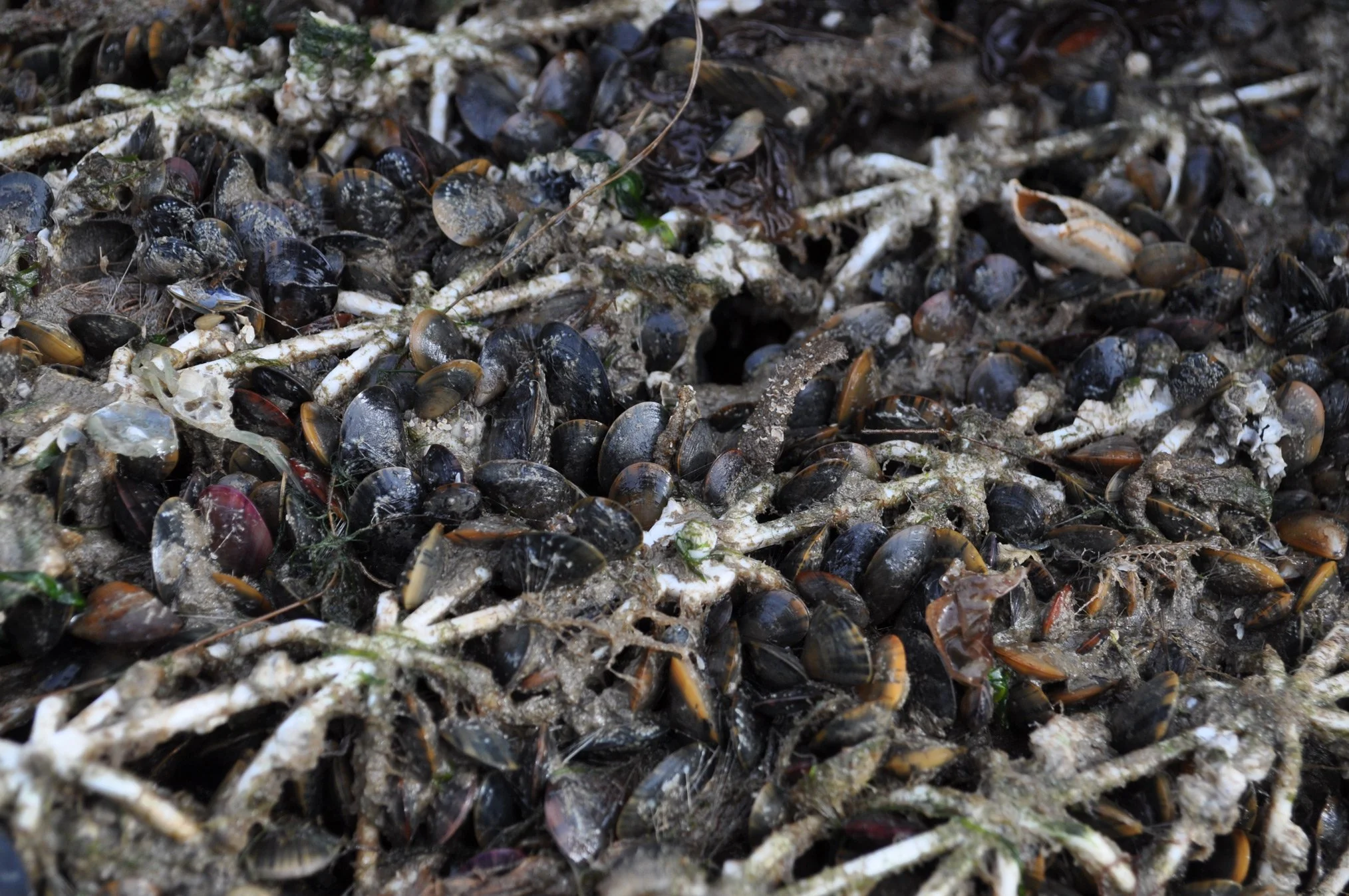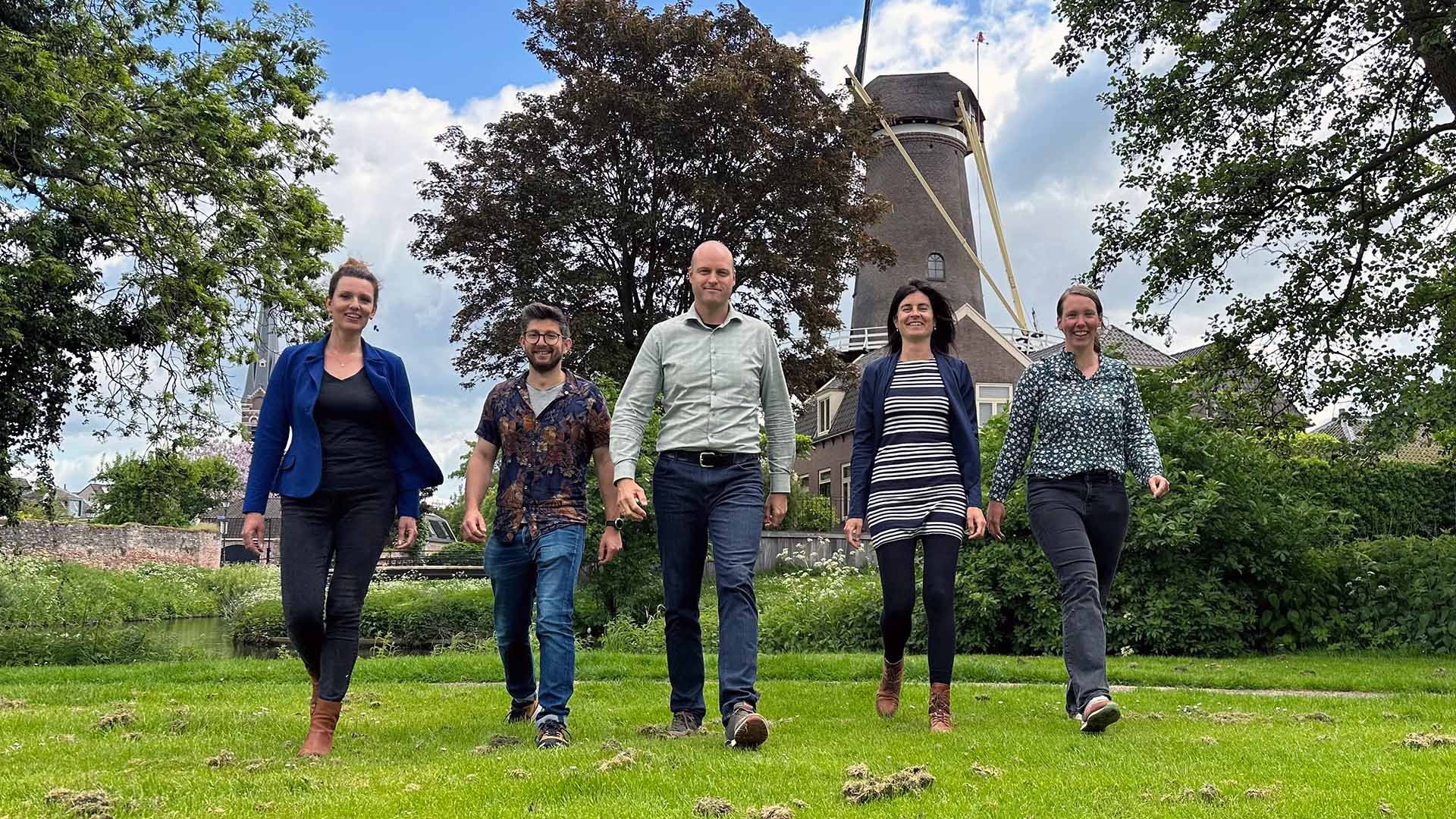How Potato Waste Can help Restore Ocean Ecosystems: Karin & Peter from BESE
The humble potato is endlessly useful and almost universally beloved. And Netherlands-based startup BESE is taking that usefulness up a notch, turning potato waste (amongst other things) into biodegradable ocean ecosystem restoration products.
For the eighth episode of our Pitchfest 2022 Series on the Ocean Impact Podcast, we chatted to Karin Didderen and Peter Vodegel from BESE - who tuned in from a snowy Netherlands - about how they’re restoring nature, naturally!
BESE amplifies coastal habitat restoration (eg. mangroves, coral, oyster beds, sea grass, etc) with biodegradable, biomimicry inspired products made from various waste streams, including potato chip waste. Their mission is to restore ocean ecosystems to help protect coastal zones, while providing an alternative to currently-used products made from plastics and concrete.
BESE’s work is heavily grounded in academia - the team is almost entirely made up of marine biologists - so science and research play an important role in showing that the products actually work. They detail their impact with fascinating case studies on their website, and have put a focus on engaging closely with stakeholders, bringing people in, and getting them involved and educated in their projects. Which is a key tool in securing other projects and expanding the business.
”it's the most fun part of this job [and] our company. It's really like spreading the word…we work with people like nature restoration Managers or volunteers and there's so much knowledge to be exchanged. it's A really fascinating process to be in.
~ Karin Didderen
BESE’s solution was inspired by the many mudflats in the Netherlands which are powered by mussel reefs, an important ecosystem for a variety of birds and fish. However, once the mussel reefs were lost, the mudflat ecosystem suffered, and they were difficult to bring back.
A true chicken and egg scenario.
BESE knew this was also true of ecosystems supported by mangroves, coral, sea grass, salt marsh, and oysters too, so they set out to create restoration products that could help kickstart nature.
BESE-elements® being used for salt marsh restoration
WHY ARE OCEAN ECOSYSTEMS AFFECTED?
Organisms like mangroves, sea grass, salt marsh, mussels, oysters, and coral are what are known as ‘ecosystem engineers.’ And they develop certain traits at high populations that help individual growth.
What is an ecosystem engineer?
Ecosystem engineers are organisms that create, significantly modify, maintain, or destroy a habitat. Think of beavers!
Many ‘autogenic’ type ecosystem engineers, like the examples above, modify the environment by modifying themselves. Building the necessary structures for ecosystems to thrive, and reducing physical stress from impacts of water currents, etc.
Types of natural structures
Let’s take a seagrass forest as an example, they form dense root mats which stabilise the sediment below ground, facilitating seagrass plant growth. Similarly, salt marshes form dense patches of stiff stems above ground, facilitating growth by reducing stem movement. In both cases these natural structures locally protect against environmental stress, and encourage the growth of individual plants.
In the case of shellfish reefs, such as oyster reefs, the clustering of individuals protects them against predation, wave impact, and other environmental stressors, which results in higher densities of oyster ‘recruitment’ - that means more baby oysters!
What happens if These structures are lost?
When ocean ecosystems like a seagrass forest or an oyster reef are impacted negatively, the natural structures they’ve developed can be degraded or lost. This makes ecosystem restoration extremely difficult. Without a dense root mat, individual plants can be damaged or pulled out by heavy currents. And without clusters, oysters can be more susceptible to both prey and environmental stress, like high temperatures caused by climate change.
CURRENT OCEAN ECOSYSTEM RESTORATION METHODS
Conventionally, there are two main options:
In ideal, less harsh conditions, simply planting the vegetation or protecting the area in question (from fishing, pollution, etc) can result in nature restoring itself.
But in more dynamic situations, with harsh conditions such as stronger currents and larger waves, this method can have a high failure rate. And so typical restoration materials can include plastics, concrete, crushed rock or limestone, or oyster shells.
Some examples
In coral reef restoration, plastic cables ties are often used to fasten corals fragments to a structure
Polyethylene plastic mesh is commonly used for containing oyster shells in small-scale oyster reef restoration
In larger shellfish reef restoration (oysters, mussels, etc), a mix of bivalve shells and rubble (often limestone) are combined to create a base for the reef
Precast concrete elements are sometimes used in coral restoration, for ‘living shoreline’ reefs, etc
Structures made of stone and concrete are often used as erosion protection for wind farms, which encourages the colonisation of ‘epifauna’ but must be removed at the project’s end of life.
The downsides of typical methods
As Karin mentions in the episode, projects that involve planting vegetation like mangroves, salt marsh, seagrass, etc in areas with harsh conditions can have high failure rates, with low yields, making it a costly process.
And common materials used to assist in ocean ecosystem restoration have their downsides as well:
Polluting materials: Plastic, concrete, etc can be polluting, impacting water quality and not biodegrading over time. They remain behind even after kickstarting the natural process or, in the case of some plastic, could break down into microplastics.
Environmental footprint: crushed rock/stone can have large footprint if mined, concrete has high water and energy consumption in its manufacturing, and precast concrete elements have higher environmental costs of transportation due to weight.
Biosecurity risks: The use of recycled bivalve shells in ocean ecosystem reservation projects can present a biosecurity risk, as disease or marine pests could be present shells.
Finally, most of the methods that are traditionally used don’t actually mimic the natural structures of these ‘ecosystem engineers’ the way that BESE products do.
BESE: A NEW WAY TO RESTORE OCEAN ECOSYSTEMS
BESE-elements® structure on display on a restoration project
BESE’s 100% biodegradable ecosystem restoration products provide an alternative to traditional methods, and to products that use plastics and concrete.
Their unique point of difference is using biomimicry to increase the success of restoration projects around the world.
BESE-elements® is the star of the show here. These stackable, 3D mesh sheets ‘click’ together, mimicking the natural conditions essential for young plants and animals to survive in dynamic coastal zones. Upscaling restoration efforts, while minimising plant requirements.
This provides a temporary structure, and protection for organisms, to kickstart establishment and encourage growth. After establishment, ocean ecosystems create their own natural structure and BESE-elements® breaks down.
Nature Becomes Nature
BESE uprecycles waste streams like potato chip scraps, oyster shells, and wood chips into products that help restore ecosystems. And in some cases they are using historical, traditional techniques to do it!
BESE-elements® and BESE-cable ties
According to BESE, for every kilo of potato chips eaten in The Netherlands, 25% ends up as scraps and peelings.
This creates a waste stream of 814,000 tonnes, annually.
And BESE are tapping into it. They blend the potato starch from this waste with biopolymers, to create their rigid but permeable solution BESE-elements® as well as BESE-cable ties for use in coral reef restoration, where coral fragments needs to be secured to a frame.
BESE-reef paste
Oyster shells aren’t compostable, this means that for restaurants, seafood wholesalers, etc, those shells are destined for landfill. Shell-recycling programs step in to utilise these for ecosystem restoration. However, BESE is taking it a step further with BESE-reef paste. They got the last standing chalk-mill in The Netherlands to grind shells for them, this is mixed with a bio based additive to create reef paste.
The paste can be applied to any hard surface where it functions as a temporary coating to enhance shellfish recruitment. Once oysters or other shellfish have colonised the structure, the reef paste starts to disintegrate, leaving only the natural system behind.
This is a good option to use where
Limited shell is available
Conditions are too harsh to place loose shells on the sea floor (high chance of burial or too much movement)
For application on artificial reef structures
Even for use on offshore energy structures like wind farms
BESE-MESH
BESE-mesh bags are an alternative to polyethylene plastic mesh bags which are filled with oyster shells and placed into the water to recruit oysters, or used as grow-out bags for aquatic vegetation like riverbank vegetation and submerged aquatic vegetation.
They have two types:
A cellulose mesh derived from wood chip waste from forest management, which breaks down quickly in weeks or months.
And a biopolymer mesh with a longer life-span of years, which is preferable for oyster reef restoration purposes.
Mussel Reef restoration using BESE-elements®
Advice for OCEAN IMPACT STARTUPS
The BESE team
Karin and Peter had some fantastic key learnings to offer other startup founders, particularly entrepreneurs in nature or ocean restoration, from their experience so far.
sTAND BY YOUR IDEA
“We were convinced these biodegradable structures were the future, but it's very hard to develop them and then once you have them, people have a lot of demand. So they want a different size, and a different colour…. Just stand by your idea. If it's a good idea: it will fly.”
~Karin
MAKE YOUR WORK VISUAL
“I learned a lot during the coral restoration project that it’s very important to get a lot of good footage, so you're able to convince other people who are not going underwater what your results are. And make it a little bit sexy, make it more sexy than just the scientific numbers, for the public. I think that's a part that's often underestimated in the scientific world and the nature restoration world.”
~Peter
BE PATIENT
“You just have to be patient, especially if you work with nature. It's not a matter of getting revenue within a year - or developing something [quickly] - because it will take time. And this also allows for different business models, because sometimes…adding a lot of money to a company will not give you the results, because nature is doing its job [over] 10 years…you just have to wait. We are pioneering in this, as a slow-growth company… It’s good for people that are used to normal business models [to know] that these kind of developments need a different approach”
~Karin
CONNECTION TO NATURE
“Especially if you work in nature restoration: it's not only about nature, it's also about the people. So I think we can learn a lot for example from your Indigenous community; one of the best days of my career when I was doing this restoration project [in Australia] with the knowledge of Indigenous people. They have so much more connection to nature, and I think that's really important for the future of Ocean health and nature…people have to stay connected to nature in order to solve all these problems. And that should be part of all these efforts.”
~Karin
And a Call to Action for OCEAN LOVERS?
With BESE working on so many projects around the globe, Karin says it’s important for individuals to realise that anyone can start a nature restoration project. She’s seen first-hand that “there's no difference between a very rich company that has a project, or just volunteers along a waterway that start a project… It can really start small and then become something really relevant.”
Peter adds “Yeah, start doing it. That's the main message. People tend to overthink it…but you can never really see all the obstacles coming ahead. So yeah, have the right intentions and start doing it, start talking to people about it. Don't wait too long, start acting - that's the way a snowball goes rolling downhill and becomes a big snowball.”
We couldn’t have said it better ourselves!
A BESE-elements® installation teeming with life
Listen and Watch
New episodes of the Pitchfest 2022 Series will be releasing each week. Follow the Ocean Impact Podcast wherever you get your podcasts, or subscribe and watch on Youtube.











